Discover the Ancient Secrets of Qujiang Maba Man Site: A Journey Through Time
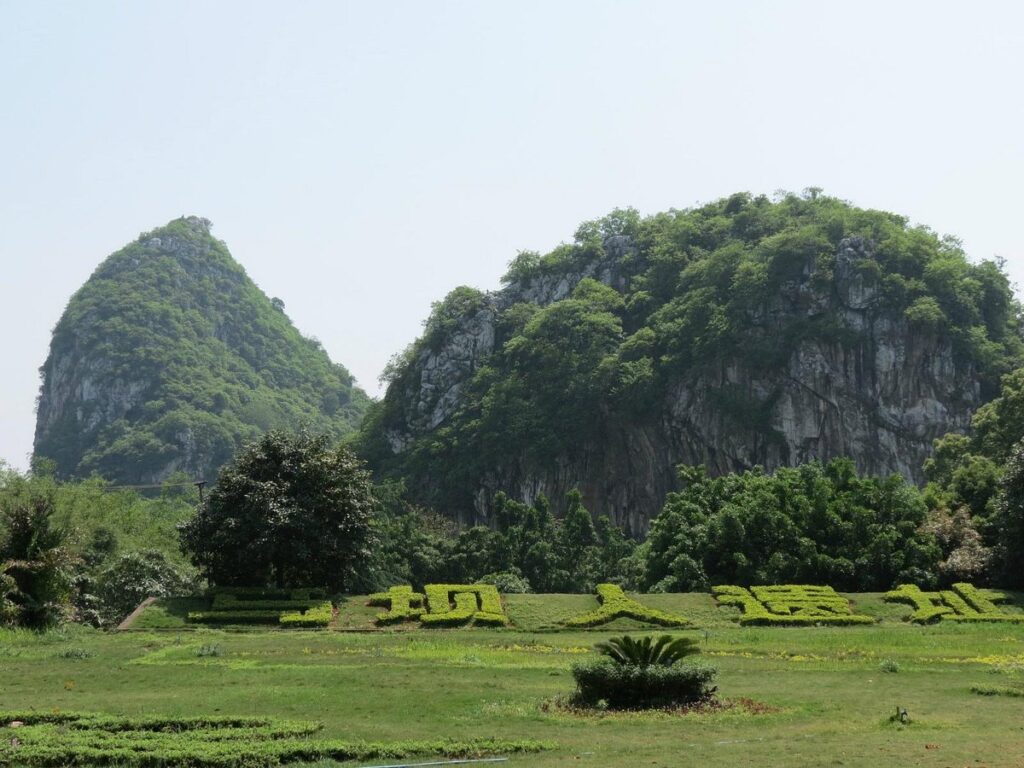
An Essential Guide to Visiting Qujiang Maba Man Site
Nestled in the lush landscapes near Shaoguan, the Qujiang Maba Man Site offers a remarkable journey back in time, revealing the secrets of our ancient ancestors. This archaeological treasure is home to the Maba Man fossils, which date back over 100,000 years, providing invaluable insights into early human life and evolution. As you wander through the site, you’ll encounter well-preserved ruins, fascinating artifacts, and engaging exhibits that bring the story of the Maba Man to life.
The on-site museum is a highlight of the visit, featuring detailed explanations in both Chinese and English, ensuring that international travelers can fully appreciate the significance of the findings. Interactive displays and fossil replicas make learning an immersive experience, while the serene surroundings invite you to reflect on the rich history that unfolded in this tranquil setting.
Whether you are a history buff, an archaeology enthusiast, or simply someone seeking a unique cultural experience, the Qujiang Maba Man Site promises to captivate and inspire. Prepare to be enchanted by the harmony of nature and history as you explore this extraordinary glimpse into humanity’s past.
In This Guide
- An Essential Guide to Visiting Qujiang Maba Man Site
- The Rich History and Legends of Qujiang Maba Man Site
- Main Highlights: What You Absolutely Can’t Miss
- Planning Your Visit: A Practical Guide
- Tickets: Prices, Booking, and Tips
- How to Get There: A Complete Transportation Guide
- Local Cuisine and Accommodation Nearby
- Frequently Asked Questions
- Final Thoughts on Your Trip
The Rich History and Legends of Qujiang Maba Man Site
Nestled in the scenic landscape near Shaoguan, the Qujiang Maba Man Site offers a remarkable window into the distant past, revealing the lives of early humans who roamed this region over 100,000 years ago. This archaeological site is famed for the discovery of the Maba Man fossils, which represent some of the earliest evidence of human existence in southern China.
The story of the Maba Man began in 1958 when local quarry workers stumbled upon a set of fossilized remains in a limestone cave. These remains were later identified as belonging to a hominin, a species closely related to modern humans. The Maba Man stands as a crucial piece in the puzzle of human evolution, showcasing characteristics that bridge the gap between our ancient ancestors and contemporary Homo sapiens. The fossils include a partial skull, jawbone, and teeth, which have provided invaluable insights into the physical traits and lifestyle of these prehistoric inhabitants.
Archaeological excavations at the site have unearthed a trove of artifacts, including stone tools and remnants of animal bones, which attest to the subsistence strategies employed by early humans. These findings suggest that the Maba Man and his contemporaries were adept hunters and gatherers, capable of exploiting the rich biodiversity of their environment. The tools discovered at the site are indicative of a sophisticated understanding of their surroundings, emphasizing the ingenuity and adaptability that characterized these early inhabitants.
Beyond the scientific significance, the Maba Man has woven itself into the cultural fabric of the region. Local legends often speak of the cave as a place of mystery and ancient power, with tales passed down through generations that evoke the spirit of the Maba Man and his kin. Visitors to the site can sense this connection to the past, feeling as though they are walking in the footsteps of those who lived long before.
The site is complemented by a well-organized museum that houses fossil replicas, artifacts, and interactive displays, making it an engaging destination for history enthusiasts and curious travelers alike. With informative exhibits available in both Chinese and English, visitors are afforded a comprehensive understanding of the significance of the Maba Man findings.
Surrounded by lush greenery and natural rock formations, the Qujiang Maba Man Site is not only a hub of historical exploration but also a peaceful retreat where visitors can reflect on the ancient world. With knowledgeable staff ready to share their insights and stories, the site offers a meaningful experience that marries education with the beauty of nature.
In summary, the Qujiang Maba Man Site is not merely an archaeological landmark; it is a testament to human resilience and evolution. It invites visitors to connect with the past and understand the rich tapestry of history that has shaped our present. Whether you are an avid history buff or a casual traveler, a visit to this remarkable site promises to be a journey through time, leaving you with a deeper appreciation for the roots of humanity.
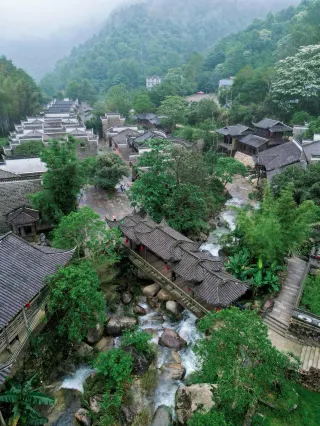
Qujiang Maba Man Site.
Main Highlights: What You Absolutely Can’t Miss
Discovering the Qujiang Maba Man Site is like stepping back in time to over 100,000 years ago. As you explore this remarkable archaeological site near Shaoguan, you will encounter a wealth of history and natural beauty that is simply unmissable. Here’s what you absolutely can’t miss during your visit:
1. The Fossil Exhibits
At the heart of the Maba Man Site lies the fascinating fossil remains of the Maba Man, one of the earliest known human ancestors in China. The on-site museum houses well-preserved fossil replicas and artifacts that tell the story of early human life. Detailed explanations, available in both Chinese and English, provide context and insight into this significant finding. Don’t forget to take your time here – the displays are not only educational but also thought-provoking.
2. Interactive Displays
Engage with history through the site’s interactive displays. These hands-on exhibits allow visitors to delve deeper into the lifestyle, environment, and evolution of early humans. Whether you’re an archaeology buff or just curious about our ancestors, these interactive elements bring the past to life in an accessible and enjoyable way.
3. Scenic Natural Surroundings
The Maba Man Ruins are set against a backdrop of stunning natural scenery. The area is characterized by lush greenery and impressive rock formations, perfect for a leisurely stroll or a peaceful picnic. Take a moment to soak in the views and enjoy the tranquility of the surroundings – it’s an ideal way to combine learning with relaxation.
4. The Cave Experience
A visit to the Maba Man site wouldn’t be complete without exploring the cave where the fossils were discovered. While it can get a bit warm inside, the cave is a cool refuge during hot summer days. The cave offers a unique atmosphere that adds to the overall experience, allowing you to connect with the space where ancient history was unearthed. Don’t forget to bring water to stay hydrated while you explore!
5. Knowledgeable Staff
The staff at the Maba Man Site are not only friendly but also well-informed. They are eager to share their knowledge about the site, the discoveries, and the ongoing research. Engaging with them can greatly enhance your visit, offering you deeper insights and answers to any questions you may have.
6. Educational and Family-Friendly
This destination is not just for history enthusiasts; it’s a family-friendly site that encourages learning for all ages. With engaging exhibits and plenty of outdoor space for children to explore, it’s a great way to inspire curiosity about our past in the younger generation.
7. Nearby Attractions
After soaking in the history at the Maba Man Ruins, consider exploring nearby attractions. The Nanhua Buddhist Temple and Shaoguan Lion Rock are great options for further cultural enrichment. Each site offers its own unique insights into the region’s heritage and natural beauty.
Conclusion
The Qujiang Maba Man Site is a captivating destination that seamlessly blends history, education, and stunning nature. Whether you’re wandering through the museum, engaging with interactive displays, or enjoying the serene surroundings, this site promises a memorable experience that will deepen your appreciation for humanity’s ancient past. Don’t miss this extraordinary glimpse into the world of our ancestors!
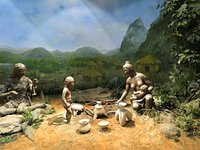
Qujiang Maba Man Site.
Planning Your Visit: A Practical Guide
Your Essential Guide to Visiting the Qujiang Maba Man Site
Exploring the Qujiang Maba Man Site is a journey into ancient history, offering a unique glimpse into the lives of our prehistoric ancestors. Nestled in the lush surroundings of Shaoguan, this archaeological gem is a must-visit for history buffs and curious travelers alike. Here’s everything you need to know to plan your visit effectively.
Getting There
Location:
The Maba Man Ruins are situated at No. 3 Shiyan Road, Qujiang District, Shaoguan, Guangdong Province, China.
Transportation Options:
– By Air: The nearest major airport is Baiyun International Airport (CAN) in Guangzhou, about 130 kilometers away. From the airport, you can take a train or bus to Shaoguan.
– By Train: Shaoguan Railway Station is well-connected to major cities in China. Trains from Guangzhou, Shenzhen, and other regions arrive frequently.
– Local Transport: Once in Shaoguan, you can take a taxi or use local buses to reach the site. The journey is relatively short and straightforward.
Opening Hours
The site is open daily from 8:00 AM to 6:00 PM. It’s advisable to arrive early to enjoy the exhibits and explore the surrounding natural beauty without the crowds.
Admission Fees
While specific fees may vary, check local sources or the site’s official website for the latest admission prices, as there may be discounts for students or group bookings.
What to Expect
Exhibits:
The Maba Man Ruins feature a well-organized museum with informative displays in both Chinese and English. You will find fossil replicas, artifacts, and interactive exhibits that delve into the significance of the Maba Man, whose remains date back over 100,000 years.
Outdoor Experience:
The site is set against a backdrop of beautiful greenery and natural rock formations, making it an excellent spot for leisurely walks. Take your time to wander through the area, relax under the trees, and enjoy the serene environment.
Facilities:
The facilities are clean and well-maintained, with friendly staff available to assist you. Restrooms are available on-site, and there are places to sit and enjoy a picnic if you wish.
Tips for Your Visit
- Stay Hydrated: The cave area can get warm, especially in the summer months. Bring plenty of water to keep yourself refreshed during your visit.
- Plan for Some Downtime: Allocate enough time to absorb the exhibits and enjoy the peaceful surroundings. You might want to spend some time relaxing in the shade or exploring nearby trails.
- Photography: Don’t forget your camera! The scenic views and historical artifacts provide excellent opportunities for memorable photos.
- Learn About Local Culture: Consider visiting nearby attractions such as the Nanhua Buddhist Temple or Shaoguan Lion Rock to enhance your cultural experience in the region.
Nearby Attractions
If you’re looking to extend your adventure, there are several notable sites close to the Maba Man Ruins:
– Nanhua Buddhist Temple: A beautiful temple complex that offers a glimpse into Buddhist culture and architecture.
– Shaoguan Lion Rock: Perfect for hiking enthusiasts, this area provides stunning panoramic views of the landscape.
– Caoxi Hot Spring: Treat yourself to a relaxing soak in the natural hot springs after your archaeological explorations.
Final Thoughts
A visit to the Qujiang Maba Man Site is not just about viewing ancient relics; it’s about connecting with our shared human history. Whether you’re an archaeology enthusiast or simply seeking a unique experience, this site promises to be both educational and enjoyable. Plan your trip today and step back in time at one of China’s remarkable historical sites!
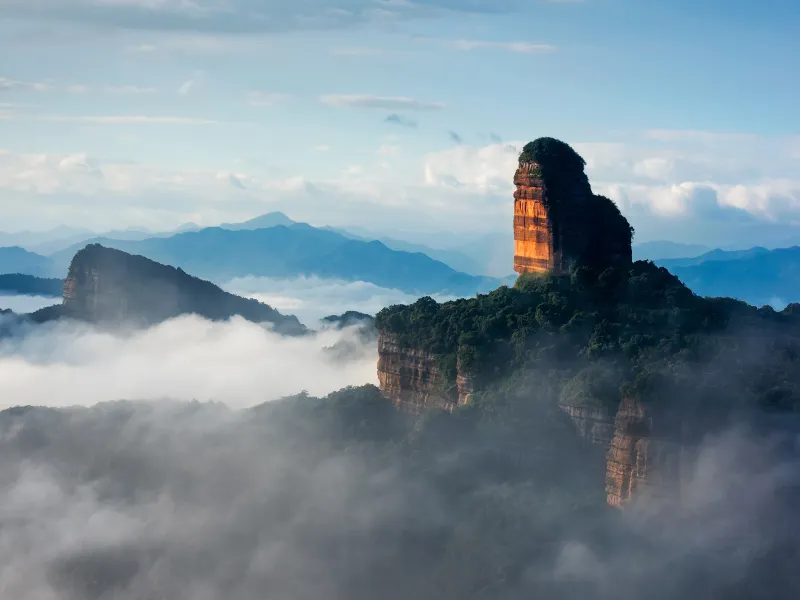
Qujiang Maba Man Site.
Tickets: Prices, Booking, and Tips
Visiting the Qujiang Maba Man Site offers a unique opportunity to step back into prehistoric times and explore fascinating archaeological findings. To make your visit as smooth as possible, here’s what you need to know about tickets, pricing, and some helpful tips.
Ticket Information
- Admission Price: The standard ticket price for the Maba Man Ruins is approximately ¥30 (around $4.50 USD), making it an affordable excursion for history enthusiasts and curious travelers alike.
- Discounts: Students, seniors, and groups may be eligible for discounted tickets, so it’s worth asking about any available concessions at the ticket counter.
- Online Booking: While tickets can typically be purchased on-site, consider checking if online booking is available to save time and ensure your entry, especially during peak tourist seasons.
Opening Hours
The site is open daily from 8:00 AM to 6:00 PM, allowing ample time to explore the museum, view the exhibits, and enjoy the surrounding natural beauty. It’s advisable to arrive early in the day to make the most of your visit and avoid the crowds.
Tips for Your Visit
- Language Accessibility: Although the museum provides explanations in both Chinese and English, some travelers have noted that additional English descriptions would enhance the experience. Don’t hesitate to ask staff for more information if needed.
- Stay Hydrated: The cave area can get quite warm, especially during summer months. Bring plenty of water to stay hydrated as you explore the site.
- Combine Your Trip: The Maba Man Ruins are located in a scenic area filled with lush greenery and rock formations. Consider pairing your visit with nearby attractions, such as the Nanhua Buddhist Temple or Shaoguan Forest Park, for a full day of exploration.
- Photography: Capture the beauty of both the archaeological site and its natural surroundings, but be sure to respect any photography restrictions in place inside the museum.
With this ticket and visit information in hand, you’re all set for an enriching experience at the Qujiang Maba Man Site, where history and nature intertwine beautifully. Enjoy your journey into the past!
How to Get There: A Complete Transportation Guide
Getting to the Qujiang Maba Man Site
Embarking on a journey to the Qujiang Maba Man Site, an archaeological gem located near Shaoguan, is an exciting adventure that offers a glimpse into prehistoric human history. Here’s a comprehensive guide to help you navigate your way to this fascinating destination.
By Air
For international travelers, the nearest major airport is Guangzhou Baiyun International Airport (CAN), located approximately 150 kilometers (about 93 miles) from Shaoguan. Once you arrive, you have a few options to reach the Maba Man Site:
- By Train:
- From Baiyun Airport, take the Airport Express to Guangzhou South Railway Station.
- From there, board a high-speed train to Shaoguan. The journey takes about 1 to 1.5 hours.
-
Once in Shaoguan, you can take a taxi or local bus to the Maba Man Site.
-
By Bus:
- Direct buses from Baiyun Airport to Shaoguan are also available, though this may take longer than the train option. Travel time can range from 2.5 to 3 hours.
By Train
If you are already in China, Shaoguan is well-connected by train. The city has a major train station that services both high-speed and regular trains from various cities, including Guangzhou, Shenzhen, and Hong Kong.
- From Guangzhou: High-speed trains from Guangzhou take around 1 hour. Upon arrival at Shaoguan Railway Station, you can easily grab a taxi or take a local bus to the Qujiang District.
- From Shenzhen: Similarly, high-speed trains take about 1.5 hours to reach Shaoguan.
By Bus
Long-distance buses frequently run to Shaoguan from various cities across Guangdong province. The Shaoguan Long-distance Bus Station is centrally located, making it easy to access local transport options upon arrival.
- Local Buses: After reaching the Shaoguan bus station, look for buses or taxis heading to the Qujiang District. The Maba Man Site is about 15 kilometers (approximately 9 miles) from the city center.
By Taxi or Ride-Hailing Apps
For added convenience, taxis and ride-hailing services like Didi Chuxing are readily available in Shaoguan. This option is particularly useful if you prefer a direct route to the site without the hassle of navigating public transport.
- Estimated Fare: A taxi from downtown Shaoguan to the Maba Man Site will typically cost around 30-50 RMB (approximately $5-$8) and take about 20-30 minutes, depending on traffic.
Local Tips
- Language: While the onsite museum offers explanations in both Chinese and English, it’s helpful to have a translation app or phrasebook for additional assistance when communicating with locals.
- Timing: The Maba Man Site is open daily from 8:00 AM to 6:00 PM, so plan your visit accordingly to make the most of your day.
- What to Bring: Prepare for a bit of walking and don’t forget to bring water, especially during the hotter months, as the site features outdoor areas ideal for exploring.
By following this guide, you’re well-equipped to embark on your journey to the Qujiang Maba Man Site—a remarkable place where history comes alive amidst beautiful scenery. Enjoy your visit!
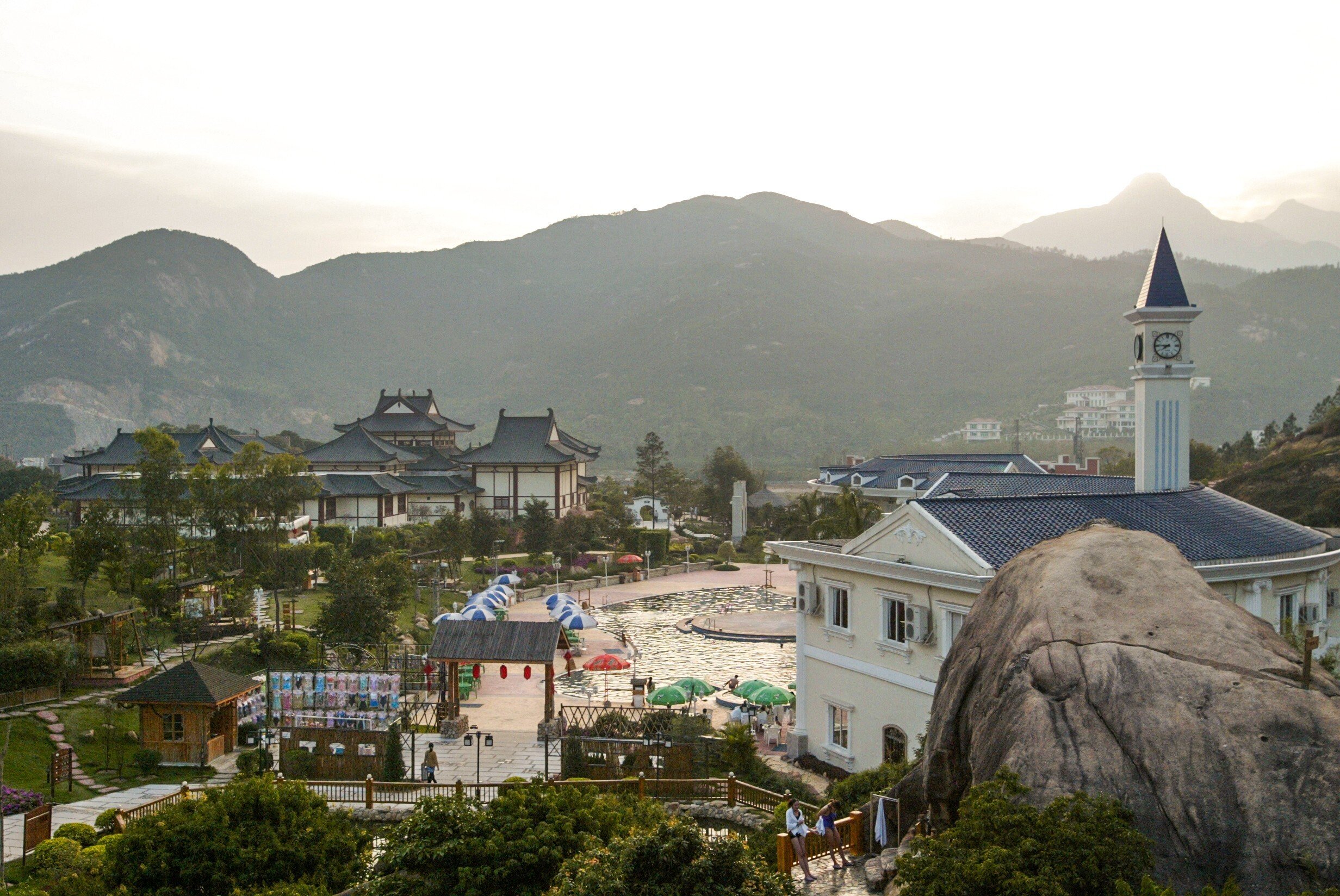
Qujiang Maba Man Site.
Local Cuisine and Accommodation Nearby
When visiting the Qujiang Maba Man Site, you’ll want to indulge in the local flavors and find a comfortable place to rest after exploring this fascinating archaeological site. Here are some recommendations for dining and accommodation in the area.
Local Cuisine
Mo Fei CoffeeBreak
Located just a short drive from the Maba Man Ruins, Mo Fei CoffeeBreak is a cozy café that serves a variety of coffee blends, light snacks, and desserts. It’s an ideal spot to unwind after your visit, with a tranquil atmosphere and friendly service. Consider trying their signature coffee while enjoying a slice of cake or a light sandwich.
Traditional Shaoguan Cuisine
For a more authentic dining experience, seek out local restaurants in the Shaoguan area that serve traditional Guangdong dishes. Look for items such as stir-fried river shrimp, steamed fish, and bamboo shoots. Many eateries will offer seasonal specialties, so don’t hesitate to ask the locals for their recommendations.
Accommodation Nearby
Country Garden Phoenix Hotel Shaoguan
Just a few miles from the Maba Man Ruins, this hotel provides a blend of comfort and convenience. With modern amenities, spacious rooms, and beautiful views of the surrounding landscape, it’s a perfect base for your adventures. The hotel also features a restaurant where you can sample both local and international dishes.
7 Days Inn Shaoguan Qujiang
For travelers on a budget, 7 Days Inn offers affordable and clean accommodations close to the site. It’s a great option if you’re looking for a simple place to rest your head without breaking the bank. Their friendly staff can assist you with any local inquiries you may have.
Exploring the Area
After enjoying a satisfying meal and a good night’s sleep, consider visiting nearby attractions such as the Nanhua Buddhist Temple or the scenic Shaoguan Forest Park. These sites not only enhance your understanding of the region’s culture but also provide opportunities for relaxation amidst nature.
Whether you’re sampling the local cuisine or settling into a welcoming hotel, the Qujiang Maba Man Site area has plenty to offer for an enriching travel experience.

Qujiang Maba Man Site.
Frequently Asked Questions
-
What are the opening hours for the Qujiang Maba Man Site?
The site is open daily from 8:00 AM to 6:00 PM, making it easy to fit into your itinerary. -
Is there an entry fee for the Maba Man Ruins?
Yes, there is an entry fee. However, prices can vary, so it’s best to check the official website or local information for the most current pricing details. -
How can I reach the Maba Man Ruins from Shaoguan city center?
The site is located approximately 10 kilometers from Shaoguan city center. You can take a taxi or local bus, which are both affordable options. Alternatively, consider renting a bicycle for a scenic ride. -
Are there English translations available at the site?
Yes, the museum and exhibits provide detailed explanations in both Chinese and English, ensuring that all visitors can fully appreciate the significance of the findings. -
What should I bring when visiting the Maba Man Ruins?
It’s advisable to bring water, especially during the warmer months, as the area can get hot. Comfortable walking shoes are also recommended for exploring the site and its surrounding natural beauty. -
Is the Maba Man Ruins suitable for families with children?
Absolutely! The Maba Man Ruins offers educational opportunities along with engaging interactive displays, making it a great outing for families. Kids will enjoy exploring the outdoors and the fascinating exhibits. -
Are there facilities available on-site?
Yes, the site is well-maintained with clean facilities. There are rest areas where you can relax and enjoy the serene surroundings after exploring the exhibits. -
What other attractions are nearby that I can visit?
After visiting the Maba Man Ruins, consider exploring other nearby attractions such as the Nanhua Buddhist Temple, Shaoguan Forest Park, and the scenic Lion Rock, all of which provide additional insights into the rich cultural and natural heritage of the area.
Final Thoughts on Your Trip
As you wrap up your visit to the Qujiang Maba Man Site, take a moment to reflect on the profound connection to our ancient past that this remarkable site offers. Nestled amidst lush greenery and breathtaking rock formations, the ruins not only tell the story of the Maba Man, whose fossils date back over 100,000 years, but they also invite you to ponder the evolution of humanity itself.
The accompanying museum enhances your experience, providing a gateway into the lives of early humans through well-preserved artifacts and engaging exhibits. Whether you are an ardent history buff or simply a curious traveler, the site promises a unique blend of education and tranquility. The friendly staff and serene surroundings create an atmosphere that encourages exploration and contemplation.
As you depart, carry with you not just memories of the ancient remnants, but a deeper appreciation for the journey of humankind. The Maba Man Ruins are a testament to our shared history, reminding us of where we came from and inspiring us to consider where we are headed. Until your next adventure, may your travels continue to enlighten and inspire!